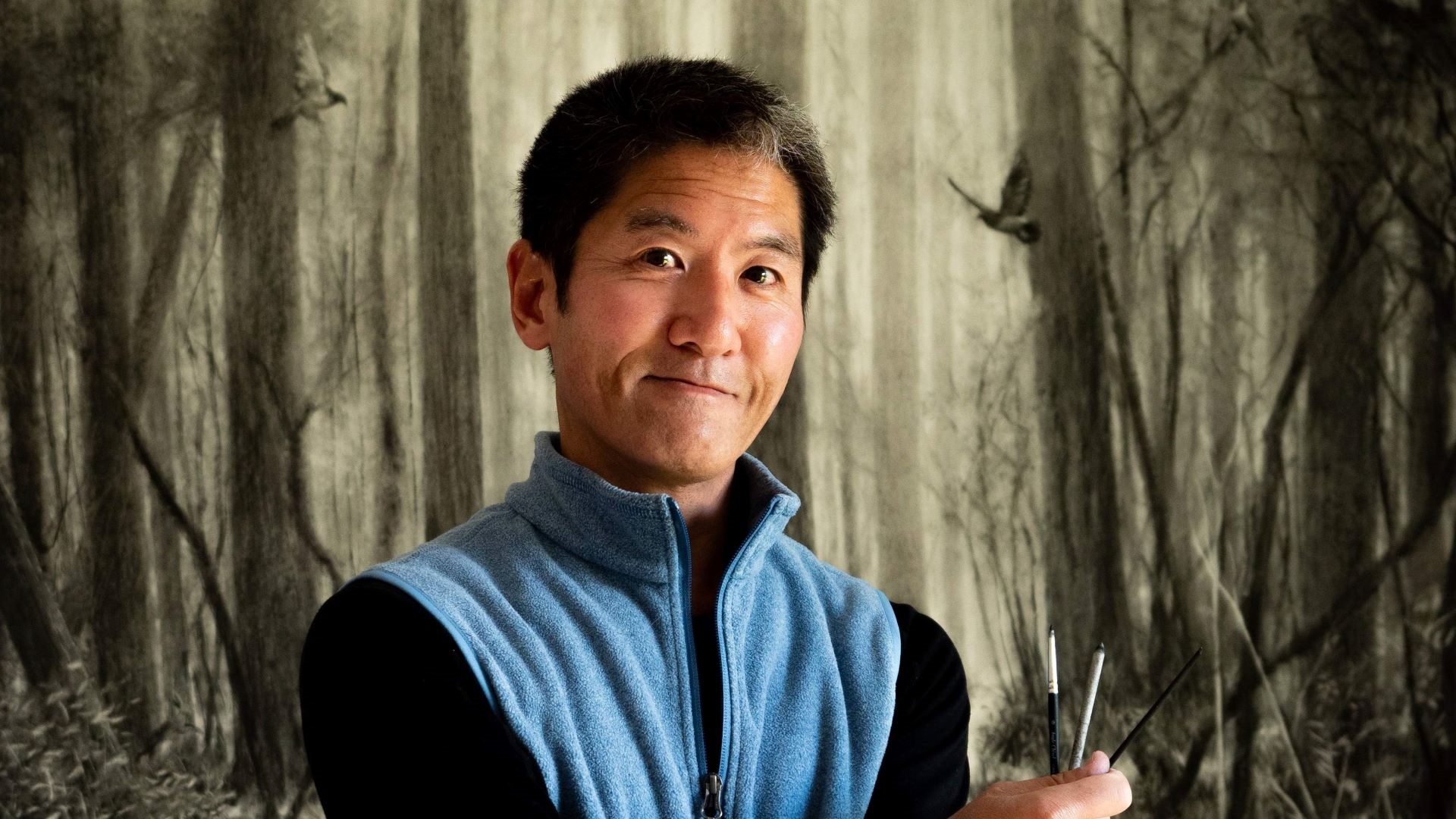Into the woods
Published on 06 July 2021

For Palmy artist Naga Tsutsumi, his creations begin in the very roots of our region. From the mighty tōtara, Naga Tsutsumi imparts the soul of the forest to large white sheets.
There's nothing simple to the rich atmospheres he conjures from black and white. They're products of nature, fire and an endless pursuit of perfection.
The craft begins long before charcoal meets paper. Tsutsumi pulls new life into fallen tōtara logs and branches, their charcoal ashes repeating into forms familiar, the forests from whence they came.

"With oil as a medium it didn't feel quite right – I'm not involved enough. Everything is prepared by someone else, the paints are from France and England, the brushes from Japan."
From his Palmy studio, he kiln-fires tōtara into charcoal. "I've done about 50 tests trying to get it right, but I think I've found the firing temperature range. It's easy to get it wrong and the charcoal becomes too fragile to work with. I don't think I'll ever find the perfect method – I'll keep adjusting to see what the differences are."
He's tested wood from different trees – rimu, oak, apples and cherries, steaming it to peel back the bark, before properly drying the bare sticks in preparation for the kiln. "But tōtara is the best, it's very neutral – not too soft and not too hard."
The day we visit, Tsutsumi tells us a small pile of logs resembling firewood is tōtara that has been stacked for about 100 years in a Taihape farmhouse. It too will become part of something new. "I can't take tōtara out of our reserves, so I rely on the local people who happily supply me tōtara branches and trunks, from Ashhurst to Taihape, in Palmerston North and at Linton."
Willow is the most widely known charcoal for art because it is versatile and soft – he makes that as well, sourcing the raw ingredient from the Rangiwahia Environmental Arts Centre.
"Buying art charcoal can be quite expensive. Why pay for it when we are surrounded by native trees? Why not use what we have to make charcoal?
"Tōtara makes it more of a challenge. In my art, it's something special to New Zealand, to me, and to Manawatū. People don't know totara can be an art material."
The familiarity of the forest
In 2019, Tsutsumi's Vanished Travellers exhibition at Zimmerman Art Gallery drew inspiration from his youth in Japan and his recollection of fast-food giants springing up in the 1970s. Naturally, these charcoal renderings had a food focus.
In 2020, he shifted to landscape forests – his exhibition so popular he's been working on forest commissions ever since.
The depth of atmosphere to these drawings is spectacular – the layer upon layer of subtle and strong charcoal sweeps developing to landscapes with Norwegian noir richness and distinctly New Zealand components, such as flax, koru and the long, strong trunks of our native trees. "I'm gradually building up the forest, it's like I'm working there, building my own ideal forest."
Charcoal is best for making the almost mystical atmosphere – the airiness of the forest and the dappled light. "Japanese artists achieve this atmosphere with traditional ink wash, a quicker technique. This is a more time-consuming way but it's more fun for me."
The meaning for Tsutsumi is deeper still. He's been in New Zealand since 2002, coming to Palmy for a job at IPU. He left IPU in 2015 to work on his art, alongside graphic design work and teaching.
Going into a forest is a reminder to be aware of where I'm from, where I've been and where I am now. - Naga Tsutsumi
"Although people, cultures or sceneries in the cities might be all different according to countries, lots of things are the same in the forest. dry air, the sunbeams through the leaves, the peacefulness, the signs of living creatures, the haunting and mysterious feel... While I am walking in a New Zealand forest, I feel could also at the same time be walking in a forest in central Japan, the Pacific Northwest, or the United States. It triggers memories about what I was thinking while walking in the forest in Oregon as a student, or in Japan as a busy salaried person in Tokyo.
"There are artists and art lovers who I pay much respect to here in Manawatū. Going and living in a big city seemed to be a necessary step to be a famous artist. Here I get inspired from people and environments, and I can be a true self."
Accessing Tsutsumi's work
The day we visit, two pieces about 1.8m wide are in creation. The commissions get larger than this too, Tsutsumi says. "Some clients request me to include their family members, pets or favourite animals in the forest to make the drawing something special to the families. I try not to get more detailed information than necessary, so the work is not going to be a family portrait. In this way, it enables me to create a more imaginative world for both the clients and myself."
His work is can be viewed and commissioned through the Zimmerman Art Gallery and his own website. He also tutors in drawing through Studio on The Square.
This story was originally published in the winter 2021 issue of PalmyProud. Read the latest issue.